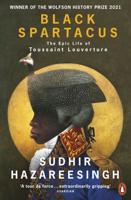Publisher's Synopsis
*Includes pictures of important people and places, as well as the artists' most famous works. *Discusses the relationships between the artists. *Includes a Bibliography on each man for further reading.
The Renaissance spawned the use of the label "Renaissance Man" to describe a person who is extremely talented in multiple fields, and no discussion of the Renaissance is complete without the original "Renaissance Man", Leonardo da Vinci. Indeed, if 100 people are asked to describe Leonardo in one word, they might give 100 answers. As the world's most famous polymath and genius, Leonardo found time to be a painter, sculptor, architect, musician, scientist, mathematician, engineer, inventor, anatomist, geologist, cartographer, botanist, and writer.
It would be hard to determine which field Leonardo had the greatest influence in. His "Mona Lisa" and "The Last Supper" are among the most famous paintings of all time, standing up against even Michelangelo's work. But even if he was not the age's greatest artist, Leonardo may have conducted his most influential work in other fields. His emphasis on the importance of Nature would influence Enlightened philosophers centuries later, and he sketched speculative designs for gadgets like helicopters that would take another 4 centuries to create. Leonardo's vision and philosophy were made possible by his astounding work as a mathematician, engineer and scientist. At a time when much of science was dictated by Church teachings, Leonardo studied geology and anatomy long before they truly even became scientific fields, and he used his incredible artistic abilities to sketch the famous Vitruvian Man, linking art and science together.
It's possible that Michelangelo is the most famous artist in history, but it's also possible that he's an underrated artist. The vast influence of his career is reflected by the fact that he is not only known for his own art but has also come to embody an entire epoch of Western art. Along with Leonardo da Vinci, there are no other artists who so fully capture the spirit of scientific and artistic discovery that characterized art during the late 15th and early 16th centuries. Moreover, Michelangelo's career is distinguished from that of his peers through his seamless ability to work within different art forms, receiving acclaim regardless of the medium. After first rising to fame as a sculptor, he also painted and served as an architect, and since his death, Michelangelo has also become decorated for his prolific output as a poet. The diversity and high standard of his work, no matter the medium, make it difficult to even arrive at a most famous work. People can make a compelling argument for at least three works: the statue of David (1501-1504), the ceiling of the Sistine Chapel (1508-1512), or the design for St. Peter's Basilica (worked on from 1546 through his death). That the same artist produced these canonical monuments of Western art is remarkable, but that each was made through a different medium defines Michelangelo as a sui generis talent.
Although Raphael was perhaps the most favored artist of the Italian Renaissance, his reputation has since been surpassed by famous contemporaries like Leonardo da Vinci and Michelangelo. To this day, it is difficult to think of Raphael without considering his artistic rivals, and comparing the artwork between Raphael and his contemporaries illuminates Raphael's artistic style and the reception surrounding his work. In many ways, his art synthesized the styles of other artists; Raphael's artwork was not produced in a vacuum, and his career reflects the rise of the artist as a culturally significant figure while also preserving the grandeur of the church. Even if he lacked the innovation of Leonardo or Michelangelo, Raphael was every bit as renowned during the time period, and an analysis of his life explains his mass appeal and cultural significance.









